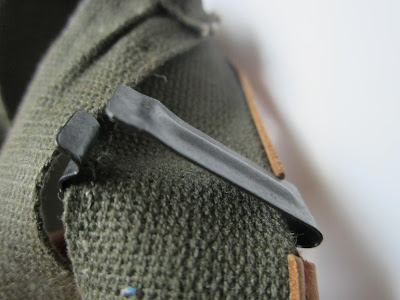In observance of the 70th anniversary of the United Nations the time has come to look
at my Canadian UN helmet.
Please stand, remove your hat, put your hockey stick at present arms and join us in one of the very best national anthems on the planet Oh Canada (click here)
Canada is an active participant in the worldwide efforts of the United Nations. Since 1956 Canadian UN forces have participated in peacekeeping efforts in the following nations and regions: Congo, New Guinea, Indonesia, Cyprus, Israel/Syria, Lebanon, Sinai, Egypt, Namibia, Western Sahara, Cambodia, Somalia, Croatia, Haiti, Rwanda, Bosnia and Herzegovina, Central African Republic, Central Africa, Kosovo, Sierra Leone,
East Timor, Ethiopia, Eritrea, Sudan, Dafur.
These are the three UN lids in my collection. From left to right: a Belgian liner, the Canadian M1 featured in this post, and a French F1, all in the distinctive blue of UN forces.
This helmet is not an M1 clone; it is a US manufactured M1 helmet and liner.
It has the distinctive color and insignia which identifies troops in the field as part of the UN peacekeeping forces.
As with all post-1944 M1 the rim is joined in the rear of the helmet.
The three-point spot-welded chinstrap bail is the same as always, but this last generation of chinstraps is entirely different than those which have gone before.
Introduced in 1973, the new chinstrap system was innovative and far superior
to the previous generations.
Replacement of the chinstraps had always been difficult in the M1. The original WWII straps were sewn in, requiring removal of the helmet to a depot in a rear area to be replaced. The later, improved T1 straps, introduced at the very end of the war were field-replaceable but still required a screwdriver or pliers to effect the change. This final-generation strap was affixed to the bales by spring clips and made changing or replacing the straps quick and easy. One wonders why it took so long to come up with this nearly obvious solution to a long-term problem.
The ends of the strap are adjustable by means of a ratchet buckle.
Another innovation is the sewn-in chincup, making for a more secure and comfortable fit.
The liner is the last generation of a direct line going back to the beginning of the Second World War.
Although this liner bears the Marmac (Marysville, MI) maker's mark, the printed paper nomenclature label that was standard in this, the Type 1, ground troops helmet liner is missing.
Production of this liner began in late 1972.
Only the merest trace of the label remains. Shown to good effect here is the characteristic mottled orange color of the Marmac liner.
As with the helmet, the liner bears the distinctive UN logo. The fact the liner is painted and fully marked indicates the liner was also a stand-alone piece of headgear.
A nice touch to this helmet is the Canadian maple leaf flag insignia affixed to the rear of the liner.
The placement of the rivets hints at the new Type 1 suspension system.
This final generation of M1 helmet liners had a very different suspension system. Rather than attached to the liner shell permanently with rivets as in the earlier generations, this suspension relies upon as system of six steel washers and clips to hold it in place. This innovation provides a means to quickly replace worn or damaged suspensions.
Some things remain the same... the trusty spring clip, connecting the headband to the suspension, has been with the M1 suspension since the design phase of 1940.
Although the shell carries no markings, the components of the liner are well marked
Where the M1 liners of earlier generations utilized a nape strap to make the headband fit more snugly, this system has a separate T-shaped neck strap for that purpose. It is much more effective than the old nape strap for stabilizing the helmet on the head of the soldier.
The ends of the strap are fastened and adjusted by means of three serrated buckles.
Though faint, the neck strap is also marked with manufacture's information and lot number.
In the crown of the helmet shell is the name of the former occupant.
As a public service announcement, I suggest not letting little kids handle your weapon.
Happy 70th anniversary to the United Nations!



































2 comments:
Mannie, like all your entries here, that's an excellent walk-around, proving that detailed observation can be very illuminating even for something so apparently familiar as an M1. This is a model of explication which many, including me, would be advised to follow. Great work!
Greg,
Your comments are always appreciated.
Mannie
Post a Comment